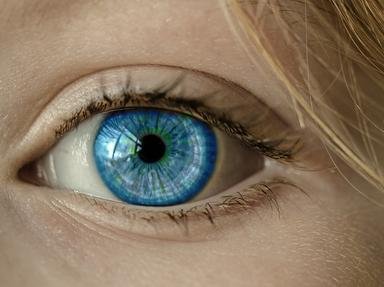Quiz Answer Key and Fun Facts
1. What is the most common disease affecting the health of the optic nerve?
2. What pigment is found in the iris that determines eye color?
3. Your eye doctor tells you that you are suffering from proptosis. What does he mean?
4. How many muscles control the movement of the eye?
5. What eye tissue can be transplanted?
6. What is a cataract?
7. What is the name of the hand held optical instrument that can be used to determine the refractive error in the eye?
8. In order of dioptric power, what two parts of the eye are responsible for focusing images onto the retina?
9. Why is the vascular part of the eye called the uvea?
10. What eye disease is treated with a phacoemulsifier?
Source: Author
golfer46
This quiz was reviewed by FunTrivia editor
rossian before going online.
Any errors found in FunTrivia content are routinely corrected through our feedback system.
